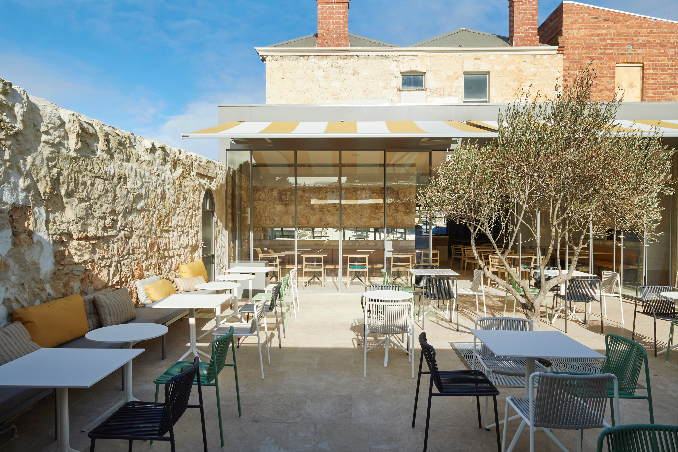As the climate gets cooler and the foliage starts to get loose, it’s now the season to plan for your outdoor furniture. Providing the investment into high-strength outdoor furniture covers will help to extend the period of usefulness of your pavilions, garden benches, and other outdoor things and inclusive keeps them in perfect order all the year round. Having a big outdoor yard that is lavish or just a tiny space of the balcony in the city, keeping your outdoor furnishings safe is a big part of home maintenance. The changing weather throughout the seasons, according to its own rhythm, can bring all kinds of difficult situations that can destroy outdoor furniture without special protection.
1. Measure Carefully
There are two critical actions required to start the process of outdoor furniture covers buying. First, you must measure your furniture correctly. By having the cover customised this way, you will be reasonably certain that it will rest firmly on your furniture without any chance of blowing off.
Firstly, determine the length, width, and the height dimensions of the item you wish to cover. For longer things that are larger such as patio sofas or dining sets, always measure each piece separately since they can be bigger.
2. Consider the Climate
The climate in your area is another key factor to consider when choosing outdoor furniture covers. Covers made from different materials will perform better in certain weather conditions.
For example, if you live in a rainy, humid climate, you’ll want a cover made from a waterproof, mildew-resistant fabric like polyester or vinyl.
3. Prioritize Durability
Outdoor furniture covers take a beating from the elements, so it’s important to choose a durable option that will stand up to wind, rain, snow, and sun exposure. Look for covers made from high-quality, heavy-duty materials that are designed to withstand the rigors of the outdoors.
Some of the most durable fabrics for outdoor furniture covers include:
– Polyester – A synthetic fabric that is water-resistant, UV-resistant, and highly tear-resistant.
– Vinyl – A plastic-based material that is waterproof, easy to clean, and highly durable.
– Acrylic – A woven fabric that is weather-resistant, fade-resistant, and mildew-resistant.
– Canvas – A natural fabric that is dense, sturdy, and water-resistant.
4. Look for UV Protection
Besides covering up your outdoor chairs from the sun, rain, and snow, it is imperative that you have protection from the sun’s damaging UV radiation. UV light if stays around the fabric for a long time can cause fabrics to wear and tear, and in the process, fades as well. Browsing through covers, ensure that you do those that are specially meant to hinder UV light.
5. Size matters make all the difference
The right cover size for your outdoor furniture ultimately determines if it’s enough of a cover or not. A small cover is not suitable because of the fact that it is not sufficient, while the cover is large might be blown away or trap the fabric that is gathering the moisture. Make sure to measure the piece effectively including the tall armrests, ottomans, or any other additional things.
6. Consider Ease of Use
The coverings for your outdoor furniture should be simple to put on and take off because you’ll probably be changing them out several times a year. Seek for covers that offer features that streamline and ease this process.
Among the useful design components to seek for are:
– Drawstring or elastic hems: These make it simple to fasten the cover around the piece of furniture.
– Grommets or handles: These facilitate carrying, lifting, and arranging the cover.
– Velcro or snap closures: These offer a simple and rapid method of securing the cover in position.
7. Evaluate Storage Options
You’ll need somewhere to put away the covers until the following season when the weather warms up and it’s time to uncover your outdoor furniture. When choosing what to buy, take into account where and how you’ll be keeping the covers. Greater storage space can be needed for heavier canvas or vinyl covers. Consider whether you have enough space to neatly store the coverings while not in use in a shed, garage, or other storage location.
8. Look for Vented Designs
To stop moisture, mould, and mildew from growing, outdoor furniture coverings must provide enough airflow. This issue can be resolved with the use of covers with vents or other elements that encourage ventilation. The air can pass through vented lids thanks to carefully positioned grommets or mesh panels. This lessens the chance that any trapped moisture may accumulate and harm your furnishings.
9. Consider Aesthetic Appeal
While functionality should be your top priority when choosing outdoor furniture covers, you’ll also want to consider the aesthetic appeal of the covers themselves.
Look for covers that complement the style and colour scheme of your existing outdoor furniture and decor.
Some other aesthetic factors to consider include:
– Fabric texture – Smooth, sleek fabrics or textured, woven materials can create different visual effects.
– Tailored fit – Covers with a sleek, tailored look tend to be more visually appealing than loose, billowy ones.
– Branding/logos – Some covers may feature subtle brand logos or other decorative elements.
Conclusion
It is certainly essential to safeguard the outdoor furniture, including outdoor couch covers, as this is one of the keys to maintaining the entire exterior of your house and ensuring that the investment you paid will last many years to come. So, by doing these steps carefully, you will be able to discover the covers that suit your outdoor furniture that are not affected by rain or sunlight. remember to use careful measurements, to be ready for any climate, to have priority durability, and also to look for covers with features such as UV protection and easy installation.

